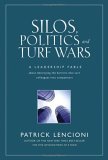StrategyDriven Resource Projection Forum

Annualized resource projection involves a number of processes that together paint a picture of the organization’s resource availability and needs. Creation of this picture begins with development of two key elements: resource availability and standardized activity assumptions. These assumptions are then applied to the proposed activities identified during the alternative development process. The resulting all encompassing list of resource loaded activities is further honed through an iterative process involving resource projection and alternative selection into the final portfolio of activities to be pursued. Derived from this portfolio is the organization’s time bound resource availability and needs.
Capacity planning refines the annualized resource projections; giving the organization insight to the additional resources needed in order to account for the inefficiencies associated with resource scheduling; personnel hiring delays and qualification; and equipment maintenance, calibration, and retooling. Each of these inefficiencies prevent resources from being available one hundred percent of the time; thereby forcing the organization to either increase its asset base or decrease its level of activity. Capacity planning reveals the average level of inefficiency providing insight to the resource and activity planning adjustments to be made.
Focus of the Resource Projection Forum
Materials in this forum are dedicated to discussing the leading practices of companies successfully executing a resource projection program in support of strategic planning. The following articles, podcasts, documents, and resources cover those topics critical to a strong resource projection program.
Articles
Best Practices
- Best Practice – Standardized Assumptions [StrategyDriven Premium Content]
- Best Practice – Begin with the Work [StrategyDriven Premium Content]
- Best Practice – Controlling Assumption Changes [StrategyDriven Premium Content]
- Best Practice – 80 Percent Efficiency Estimate [StrategyDriven Premium Content]
- Best Practice – The 40 Hour Work Week [StrategyDriven Premium Content]
- Best Practice – The 45 Week Year [StrategyDriven Premium Content]
- Best Practice – Qualification Projections [StrategyDriven Premium Content]
Warning Flags
- Warning Flag – Assumed Discretionary Effort [StrategyDriven Premium Content]
Documents
Whitepapers
- 80 Percent Efficiency Estimate [StrategyDriven Premium Content]

 Measurement of observable variables has always been as much an art as it is a science. How, when, where, and with what we measure observables highly influences the values derived.
Measurement of observable variables has always been as much an art as it is a science. How, when, where, and with what we measure observables highly influences the values derived. In today’s competitive environment, it is no longer good enough to offer employees a good place to work. Rather, it is imperative a company creates a work environment where the best want to work. Only when such an environment exists will a company attract and retain the most knowledgeable, skilled, and accomplished employees; who in-turn will effectively execute its activities and make it a viable competitor in an increasingly aggressive marketplace.
In today’s competitive environment, it is no longer good enough to offer employees a good place to work. Rather, it is imperative a company creates a work environment where the best want to work. Only when such an environment exists will a company attract and retain the most knowledgeable, skilled, and accomplished employees; who in-turn will effectively execute its activities and make it a viable competitor in an increasingly aggressive marketplace.
